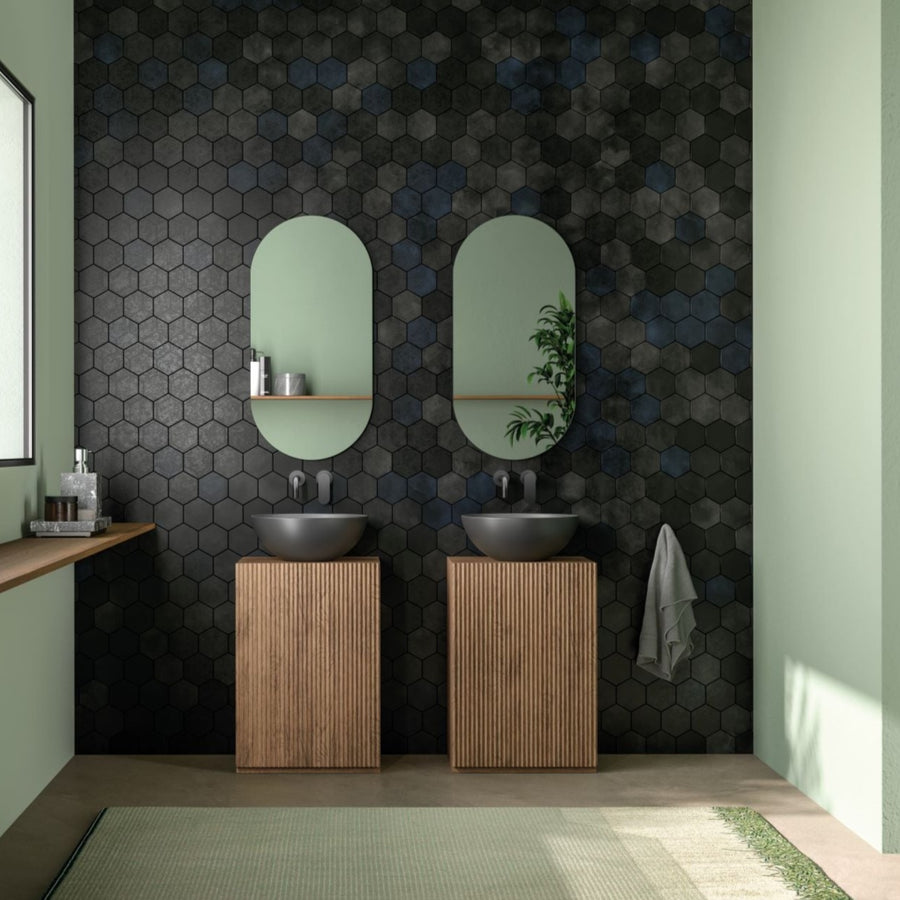Types of Stone
Marble
Marble is a metamorphic rock. Colour and appearance are their most important qualities. Marbles are usually veined, fine-textured materials that come in unlimited colors. As the favorite medium for Greek and Roman sculptors and architects, it has become a cultural symbol of tradition and refined taste. It’s extremely varied and colorful patterns make it a favorite decorative material. After being sanded with progressively finer abrasives, marble can be polished to a high luster. Marble occurs in large deposits that can be hundreds of feet thick and geographically extensive. This allows it to be economically mined.
Andesite
Andesite is an igneous rock, a member of a large family of rocks that occur in most of the world’s volcanic areas. Usually light to dark gray in color as well as the various shades of brown. Andesite derives its name from the Andes Mountains of South America. They are found in many locations around the world. Andesite has proven time and time again to be one of our most readily useful and plentiful natural resources. Our Earth's natural surface is predominately Andesite, so the supply will likely never run out.
Many artifacts found in ancient temples and monuments, including the famous 'Head of Buddha' found in the Indonesian Mountains, are made from Andesite.
Sandstone
Sandstone is a sedimentary rock. Sandstone forms where sand is laid down and buried. When sand is deeply buried, the pressure of burial and higher temperatures allow minerals to dissolve or deform. The grains become more tightly knit together and the sediments are squeezed into a smaller volume turning into stone. Sandstone is full of character, it gives information about the past: A frosted surface is generally a sign that sand was transported by wind; the degree to which the grains are rounded is a sign of how far they were transported; Ripples in stone can indicate the local water currents or wind directions.
Sandstone may come in many colours, but the most common colors are warm tones of tan, brown, yellow, red, grey, pink, white, and black. Certain colors of sandstone have been strongly identified with certain regions.
Onyx
Onyx is a stone with rare and beautiful varying colour layers. Created in caves, it has highly variable material in terms of its swirling colourful patterns and grain. This exquisite stone is characterised by its semi-translucent veining and ability to be back-lit, creating a dramatic effect. Onyx has been used as a gemstone and as decorative material. It was used in Egypt as early as the Second Dynasty to make bowls, pottery items and other decorative. Onyx is found in various regions of the world
Riverstone
Riverstone are rocks most often found on beaches and in stream beds and can come in a range of sizes, colors and textures. River rocks have many common applications, including as landscaping, decorative.
Petrified Wood/Fossil
Petrified Wood/Fossil stone is a result of tree or tree-like plants having completely transitioned to stone. This process occurs underground, when wood becomes buried under sediment and is preserved due to a lack of oxygen which prevents decomposition. Petrified wood can preserve the original structure of the stem in all its detail, structures such as tree rings and the various tissues are often features of the stone. Some petrified wood have such accurate preservations that people do not realize they are fossils until they pick them up and are shocked by their weight. Petrified wood is found in volcanic deposits and sedimentary rocks at many of locations worldwide.
Limestone
Limestone is a sedimentary rock, there are many different types of limestone formed through a variety of processes. Most limestones have a granular texture. The presence of various minerals in this stone produces various colours. Bands of limestone emerge from the Earth's surface often in spectacular rocky outcrops and islands. Limestone was also a very popular building block in the Middle Ages in the areas where it occurred, since it is hard, durable and commonly occurs in easily accessible surface exposures. Many medieval churches and castles in Europe are made of limestone, including the Great Pyramid made of limestone. Under pressure, limestone changes into marble. Travertine is a form of limestone.






